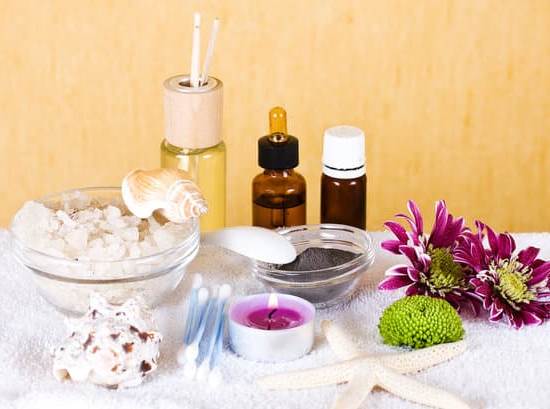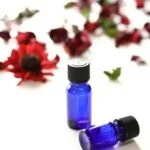Essential oils are highly concentrated plant extracts that have been used for centuries in aromatherapy to promote physical, mental, and emotional well-being. These oils, extracted from various parts of plants, are known for their therapeutic properties and are widely used in holistic healing practices. Aromatherapy, the art of using essential oils for health and wellness purposes, has gained popularity in recent years due to its natural approach to improving overall quality of life.
Aromatherapy utilizes the powerful scents of essential oils to invigorate the senses and promote relaxation, balance, and overall wellness. Each essential oil possesses unique properties that can impact mood, cognitive function, and even physical ailments. In this article, we will explore the history of essential oils in aromatherapy, the benefits of incorporating them into your routine, top essential oils and their specific uses, as well as safety precautions for optimal usage.
From lavender’s calming effects to eucalyptus’s respiratory support, essential oils offer a wide range of benefits when used mindfully in aromatherapy practices. By diluting these potent oils properly and following safety guidelines, individuals can harness the power of nature to improve their well-being. Our aromatherapy chart will provide a comprehensive guide to different essential oils and their corresponding benefits for an easy reference when creating personalized blends or seeking targeted relief.
History of Essential Oils in Aromatherapy
The use of essential oils in aromatherapy dates back thousands of years to ancient civilizations such as the Egyptians, Greeks, and Romans. These cultures recognized the therapeutic benefits of aromatic plant oils and used them for various purposes, including religious rituals, skincare, and healing practices. In fact, the term “aromatherapy” was coined by French chemist Rene-Maurice Gattefosse in the early 20th century after he accidentally discovered the healing properties of lavender oil.
Throughout history, essential oils have been valued not only for their pleasant scents but also for their medicinal properties. In traditional Chinese medicine and Ayurveda, the use of aromatic plant extracts has been a cornerstone of holistic healing practices. Today, essential oils are commonly used in massage therapy, beauty products, cleaning products, and even as natural remedies for common ailments.
As interest in natural health and wellness continues to grow, more people are turning to essential oils as a safe and effective alternative to synthetic chemicals. The therapeutic benefits of different essential oils are well-documented, and many individuals use them to enhance relaxation, improve sleep quality, alleviate stress and anxiety, boost immunity, and promote overall well-being.
By incorporating essential oils into daily routines through aromatherapy practices, individuals can experience both physical and emotional benefits that support a holistic approach to health.
| Essential Oil | Corresponding Benefit |
|---|---|
| Lavender | Relaxation and stress relief |
| Peppermint | Improved focus and mental clarity |
| Tea Tree | Skin care and blemish treatment |
Benefits of Using Essential Oils in Aromatherapy
Using essential oils in aromatherapy can provide numerous benefits for both the mind and body. One of the key advantages of using essential oils in aromatherapy is their ability to promote relaxation and reduce stress.
When inhaled, certain essential oils have been shown to have a calming effect on the nervous system, helping individuals unwind after a long day or during times of high anxiety. Oils such as lavender, chamomile, and rose are known for their relaxing properties and are commonly used in aromatherapy practices.
In addition to promoting relaxation, essential oils in aromatherapy can also help improve mood and alleviate symptoms of depression. Citrus oils like bergamot, lemon, and orange are often used to uplift spirits and increase feelings of happiness and well-being. The inhalation of these oils can stimulate the brain’s limbic system, which plays a role in emotions and memories, providing a natural way to boost mood and combat feelings of sadness or low energy.
Furthermore, using essential oils in aromatherapy can also support physical health by addressing specific ailments or symptoms. Oils such as eucalyptus, peppermint, and tea tree have antibacterial and anti-inflammatory properties that can help relieve congestion, sore muscles, or headaches when diffused or applied topically. By incorporating these oils into an aromatherapy routine, individuals can take advantage of their therapeutic benefits while enjoying the soothing scents that accompany them.
Top Essential Oils for Aromatherapy and Their Uses
Essential oils have been used for centuries in aromatherapy, a holistic healing practice that focuses on the use of natural plant extracts to promote physical, emotional, and mental well-being. These potent oils are derived from various parts of plants such as flowers, leaves, stems, roots, and bark through processes like distillation or cold pressing. Each essential oil has a unique chemical composition that gives it specific properties and benefits when used in aromatherapy.
Lavender Oil
Lavender oil is one of the most popular essential oils used in aromatherapy due to its calming and relaxing properties. It is often used to reduce stress and anxiety, promote better sleep, and alleviate headaches. Lavender oil can also help soothe skin irritations and promote a sense of overall well-being when diffused or added to massage oils.
Peppermint Oil
Peppermint oil is known for its invigorating and cooling effects, making it a great choice for boosting energy levels and relieving fatigue. In aromatherapy, peppermint oil can help improve focus and concentration, ease digestive issues like bloating and indigestion, as well as provide relief from headaches. Its refreshing scent also makes it a popular choice for diffusing in workspaces or study areas.
Tea Tree Oil
Tea tree oil is valued for its powerful antiseptic and antibacterial properties, making it an excellent choice for supporting the immune system and promoting clear skin. In aromatherapy, tea tree oil can be used to purify the air in a room, relieve congestion when added to steam inhalations, and even repel insects naturally. This versatile essential oil is a staple in many households for its wide range of benefits both in aromatherapy and skincare.
Incorporating these top essential oils into your aromatherapy practice can help enhance your overall well-being by harnessing their therapeutic properties. Whether you are looking to relax, boost your mood, improve focus or support your immune system, these essential oils offer a natural solution with countless benefits for both mind and body when used correctly according to an essential oils chart for aromatherapy.
How to Dilute Essential Oils for Aromatherapy
Essential oils are potent and highly concentrated plant extracts that can offer a wide range of therapeutic benefits when used in aromatherapy. However, due to their strong nature, it is essential to dilute essential oils properly before applying them on the skin or using them in diffusers. Diluting essential oils helps reduce the risk of skin irritation or other adverse reactions, ensuring a safe and enjoyable aromatherapy experience.
When it comes to diluting essential oils for aromatherapy, there are a few key guidelines to keep in mind. One common dilution ratio is 1-2 drops of essential oil per teaspoon of carrier oil for topical application.
Carrier oils like jojoba, coconut, almond, or olive oil serve as a neutral vehicle to help spread the essential oil across the skin without causing irritation. For diffusing essential oils in a room, you can add a few drops to water in a diffuser for a pleasant and aromatic ambiance.
To make it easier for beginners and experienced users alike, here is a simple guide on how to dilute essential oils effectively for aromatherapy:
- Choose a suitable carrier oil such as jojoba or coconut oil.
- For topical application, mix 1-2 drops of essential oil with one teaspoon of carrier oil.
- For diffusing in a room, add 3-5 drops of essential oil to water in a diffuser.
By following these dilution guidelines and precautions, you can safely enjoy the many benefits that essential oils offer in aromatherapy. Whether you are looking to relax, improve sleep quality, or boost your mood, properly diluted essential oils can enhance your overall well-being and create a soothing environment at home or work.
Safety Precautions When Using Essential Oils in Aromatherapy
When using essential oils in aromatherapy, it is important to take certain safety precautions to ensure a positive and safe experience. While essential oils can offer numerous benefits, they are potent substances that need to be handled with care. Here are some key safety measures to keep in mind when using essential oils in aromatherapy:
- Always dilute essential oils: Essential oils are highly concentrated and can cause skin irritation or sensitization if applied directly to the skin. It is crucial to dilute essential oils with a carrier oil before applying them topically.
- Patch test before use: Before using a new essential oil, perform a patch test on a small area of skin to check for any adverse reactions. This can help prevent allergic reactions or skin irritations.
- Avoid ingesting essential oils: Ingesting essential oils can be harmful and even toxic if not done correctly. It is best to use essential oils for aromatherapy purposes only, such as through inhalation or topical application.
- Keep essential oils away from children and pets: Essential oils should be stored out of reach of children and pets since ingesting them can be dangerous. Additionally, some essential oils can be toxic to animals.
In addition to these precautions, it is important to educate yourself about each specific essential oil you plan to use in aromatherapy. Different essential oils have varying properties and strengths, so understanding their individual characteristics is key to using them safely and effectively.
Remember that while essential oils can offer a range of therapeutic benefits, improper use can lead to negative side effects. By following safety guidelines and being informed about the essentials of each oil, you can enjoy the many advantages of aromatherapy without risking harm. Consult an aromatherapist or healthcare professional if you have any concerns or questions about using essential oils in your aromatherapy practice.
Aromatherapy Chart
Essential oils have gained popularity for their various uses in aromatherapy, a holistic healing treatment that uses natural plant extracts to promote health and well-being. These concentrated oils are derived from different parts of plants, such as flowers, leaves, roots, and bark, through processes like distillation or cold pressing. Each essential oil contains unique compounds that give them specific therapeutic properties when used in aromatherapy practices.
In an aromatherapy chart outlining essential oils and their corresponding benefits, one can find a comprehensive guide to the potential uses of each oil. For example, lavender essential oil is known for its calming and relaxing effects, making it an excellent choice for reducing stress and promoting sleep. On the other hand, peppermint essential oil is often used to boost energy levels and alleviate headaches due to its invigorating scent.
When using essential oils in aromatherapy, it’s crucial to consider both the physical and emotional benefits they offer. For instance, eucalyptus essential oil is commonly used to relieve respiratory issues like congestion and coughs while also providing a refreshing aroma that can clear the mind. Understanding the properties of different essential oils can help individuals create personalized blends tailored to their specific needs for overall well-being.
| Essential Oil | Corresponding Benefits |
|---|---|
| Lavender | Calming, relaxing, stress-relief, sleep promotion |
| Peppermint | Energizing, headache relief |
| Eucalyptus | Respiratory relief, mind clearing |
Conclusion
In conclusion, essential oils have been an integral part of aromatherapy for centuries, with a rich history dating back to ancient civilizations. The use of these natural plant extracts in aromatherapy offers a holistic approach to health and wellness, addressing not only physical ailments but also promoting emotional and mental well-being. The benefits of using essential oils in aromatherapy are varied and wide-ranging, making them a versatile tool for enhancing overall quality of life.
When selecting essential oils for aromatherapy, it is important to consider the specific properties and benefits of each oil. From lavender’s calming effects to eucalyptus’ respiratory support, each essential oil offers unique advantages that can be tailored to individual needs and preferences. By referring to an aromatherapy chart detailing the different essential oils and their corresponding benefits, individuals can make informed decisions on which oils to incorporate into their wellness routine.
While using essential oils in aromatherapy can be incredibly beneficial, it is crucial to observe safety precautions to prevent any adverse reactions. Diluting essential oils properly and following guidelines for usage will help minimize the risk of sensitivities or other issues.
By approaching the practice of aromatherapy with mindfulness and respect for these powerful plant extracts, individuals can harness the full potential of essential oils for their health and well-being. Ultimately, the power of essential oils in aromatherapy lies in their ability to support holistic wellness on a physical, emotional, and spiritual level.
Frequently Asked Questions
What Are the Examples of Essential Oils and Their Uses in Aromatherapy?
Essential oils like lavender, peppermint, and tea tree are commonly used in aromatherapy for various purposes. Lavender is known for its calming effects, peppermint for invigorating the senses, and tea tree for its antibacterial properties.
What Essential Oils Are Used in Aromatherapy?
Aromatherapy utilizes a wide range of essential oils including but not limited to lavender, eucalyptus, lemon, chamomile, and rosemary. Each oil has unique benefits such as relaxation, easing pain, improving focus, or boosting immunity.
What Are the 12 Must Have Essential Oils?
The 12 essential oils that are considered must-haves in any aromatherapy collection include lavender (for relaxation), tea tree (for its antiseptic properties), peppermint (to alleviate headaches), eucalyptus (for respiratory support), and lemon (for uplifting mood). Other important oils are rosemary, frankincense, chamomile, bergamot, ylang ylang, geranium and patchouli.

Are you looking for a natural way to improve your health and wellbeing?
If so, aromatherapy may be the answer for you.





